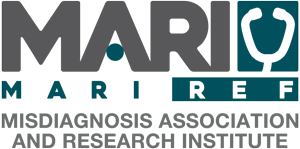Author and editor: Nicholas Jo
Overview
Rheumatoid arthritis (RA) is the most common form of arthritis affecting joints, muscles and tendons (Schneider & Krüger, 2013). Early diagnosis and recognition of signs and symptoms prevent irreversible joint damage (Aletaha & Smolen, 2018). RA is caused when the tissue lining inside joints become inflamed (Aletaha & Smolen, 2018). Inflammation compromises bones and joints, which causes pain and mobility issues (Aletaha & Smolen, 2018).
If left untreated, RA heavily impacts an individual’s quality of life and the ability to function normally in 80% of patients (Aletaha & Smolen, 2018).
Symptoms
- Pain and swelling of joints in hand and feet (Schneider & Krüger, 2013)
- Joint inflammation has a direct association with RA
- Degradation of cartilage and bone
- Morning stiffness lasting more than 30minutes
- Tendon inflammation
(Aletaha & Smolen, 2018)
Risk Factors
- Physical stress
- Recurrent joint stiffness
- Any trauma to the joint
- Age over 50 years old (Safiri et al.,2019)
- Genetic factors
(Schneider & Krüger, 2013)
How does my doctor know I have Rheumatoid Arthritis?
Inflammation and bone loss in more than two joints are a clear indication of RA (Schneider & Krüger, 2013). Inflammation can then be measured via a specific type of sonography called doppler sonography, which can give information regarding inflammation in the joint (Aletaha & Smolen, 2018). Radiography can also be used to detect bone loss in joints, and can present additional information to diagnose the individual with RA (Aletaha & Smolen, 2018).
Blood tests can also be conducted to test for abnormal or increased amounts of certain compounds in the blood, which can affirm the presence of inflammation within the body (Schneider & Krüger, 2013). Furthermore, the ACR/EULAR 2010 classification criteria, which use a point system assigned to factors such as joint distribution, size, and common RA symptoms, are utilized to confirm correct diagnosis (Schneider & Krüger, 2013).
Treatment
Pharmaceutical Treatment
The first line of treatment against RA would be the prescription of disease-modifying drugs (DMARDs) such as methotrexate (Schneider & Krüger, 2013). The recommended prescription is 25mg weekly alongside glucocorticoids and is effective in 40-50% of patients (Aletaha & Smolen, 2018). DMARDs suppress disease suppression, and their effectiveness has been highlighted in studies whereby they reverse the loss of function in over 80% of patients if administered within six months of diagnosis (Schneider & Krüger, 2013).
Non-Pharmaceutical Treatment
Physical function and exercise with a physiotherapist are also suggested for patients with RA (Schneider & Krüger, 2013). Individualized fitness programs which go over dynamic exercises and focus on strength and endurance training helps patients cope with some of the debilitating effects of RA (Schneider & Krüger, 2013). Alongside physical and medical treatment, Schneider & Krüger suggests a psychological intervention (2013). It is observed that recently diagnosed patients are overwhelmed by the amount of new information provided, and endure a significant amount of stress when deciding treatment options (Schneider & Krüger, 2013).
References
Aletaha, D., & Smolen, J. S. (2018). Diagnosis and Management of Rheumatoid Arthritis. Jama,
320(13), 1360. https://doi.org/10.1001/jama.2018.13103
Schneider, M., & Krüger, K. (2013). Rheumatoid arthritis-early diagnosis and disease
management. Deutsches Aerzteblatt Online, 110(27-28), 477–484. https://doi.org/10.3238/arztebl.2013.0477
Safiri, S., Kolahi, A. A., Hoy, D., Smith, E., Bettampadi, D., Mansournia, M. A.,
Almasi-Hashiani, A., Ashrafi-Asgarabad, A., Moradi-Lakeh, M., Qorbani, M., Collins,
G., Woolf, A. D., March, L., & Cross, M. (2019). Global, regional and national burden of rheumatoid arthritis 1990–2017: A systematic analysis of the Global Burden of Disease study 2017. Annals of the Rheumatic Diseases, 78(11), 1463–1471. https://doi.org/10.1136/annrheumdis-2019-215920
